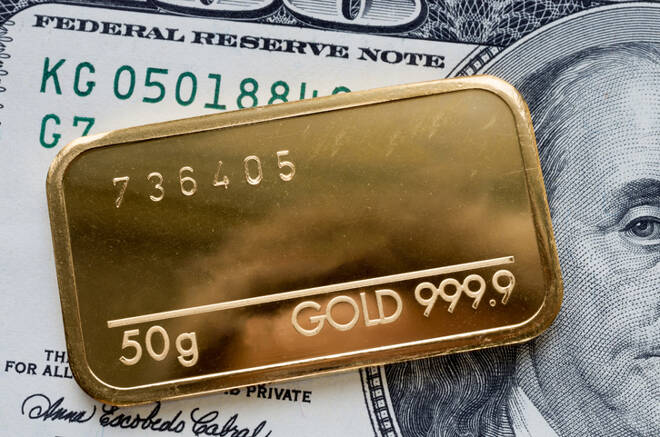Advertisement
Advertisement
Price of Gold Fundamental Weekly Forecast – Should Rally if Fed Sends Dovish Signal About Future Rate Cuts
By:
The direction of gold prices will ultimately be determined by the direction of U.S. Treasury yields. If yields fall then this will send a signal that the market feels the Fed should’ve been more aggressive. If yields stay flat or rise then this will signal that Fed policymakers got it right.
Gold futures also posted a tight range last week that fell inside the previous week’s range. This type of price action tends to indicate investor indecision and impending volatility. There was no follow-through to the upside after the market hit a multi-year high during the week-ending July 19. However, the selling wasn’t strong enough either to take out the previous week’s low. Essentially, neither the bulls nor the bears felt confident enough to take a major position ahead of this week’s U.S. Federal Reserve’s interest rate decision on July 31.
Last week, December Comex gold settled at $1432.20, down $7.20 or -0.50%.
Helping to underpin the market was expectations of a 25-basis point rate cut by the Fed, and perhaps strong hints at further rate cuts later this year. Keeping a lid on prices were reduced chances of a more aggressive 50-basis point rate hike.
Better-than-expected U.S. economic data also weighed on gold prices. Core Durable Goods Orders came in at 1.2%, beating the 0.2% forecast. Advance GDP rose 2.1%. This beat the 1.8% forecast, but came in below the previously reported 3.1%.
Weekly Forecast
Gold traders will have the opportunity this week to react to the U.S. Federal Reserve interest rate and monetary policy decisions on July 31. The Fed is widely expected to cut its benchmark rate 25-basis points. This news has been priced into the market for several weeks.
The market moving event will be Fed policy toward future rate cuts. Investors want to know if the Fed will follow-up this rate cut with another in September and December. Or, if it will skip September and cut again in December.
Investors will also want to know what criteria Fed policymakers will use to make their decisions. This is important because the U.S. economy is strong and the Fed will be making preemptive strikes to keep the expansion going.
Gold will rally if the Fed is explicitly dovish. In other words, a clear signal has to be sent to investors that rates will be coming down for some time. However, even if the Fed says multiple cuts are coming, the U.S. Dollar still has to weaken in order to generate demand for dollar-denominated gold.
The direction of gold prices will ultimately be determined by the direction of U.S. Treasury yields. If yields fall then this will send a signal that the market feels the Fed should’ve been more aggressive. If yields stay flat or rise then this will signal that Fed policymakers got it right.
About the Author
James Hyerczykauthor
James Hyerczyk is a U.S. based seasoned technical analyst and educator with over 40 years of experience in market analysis and trading, specializing in chart patterns and price movement. He is the author of two books on technical analysis and has a background in both futures and stock markets.
Latest news and analysis
Advertisement
